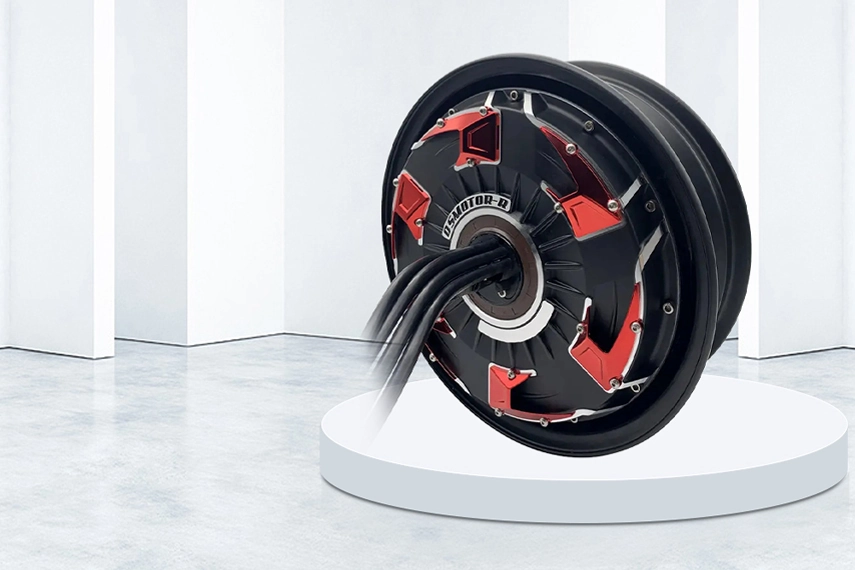The electric motorcycle industry is experiencing rapid growth, with advancements in technology driving the development of more efficient, powerful, and reliable motors. Among the various types of motors available, hub motors and other traditional motor systems, such as mid-drive motors, have distinct advantages and disadvantages. This article will provide an in-depth comparison of electric motorcycle hub motors versus other motors, focusing on technical aspects, performance, and suitability for different applications.

Hub motors are integrated directly into the wheel hub, making them a compact and efficient solution for electric motorcycles. These motors can be mounted on either the front or rear wheel and eliminate the need for additional transmission components, such as chains or belts.
Other motors, often referred to as mid-drive or centrally located motors, are mounted in the frame of the motorcycle and typically drive the rear wheel via a chain or belt. These motors are generally more complex but offer different performance characteristics compared to hub motors.
Hub motors are designed to be a part of the wheel assembly, simplifying the drivetrain by removing the need for external chains or belts. This integration leads to a more straightforward design with fewer moving parts, which can reduce maintenance requirements.
Mid-drive motors are centrally located and connected to the rear wheel via a chain or belt. This setup allows for more efficient power transfer and better weight distribution.
Hub Motors: Typically, hub motors deliver consistent torque directly to the wheel. However, their torque output is usually lower compared to mid-drive motors due to the lack of a gear reduction system. This can limit their effectiveness in steep inclines or high-performance applications.
Mid-Drive Motors: These motors can utilize the motorcycle’s gear system, providing higher torque and better performance, especially in varied terrains and steep inclines. The ability to shift gears allows for more efficient power usage and improved range.
Hub Motors: Hub motors can be more efficient at lower speeds and in urban commuting scenarios due to their direct drive design. The lack of a transmission system means less energy is lost in power transfer.
Mid-Drive Motors: While mid-drive motors may have slightly lower efficiency due to mechanical losses in the drivetrain, their ability to use gears can lead to better overall efficiency in varied riding conditions.
Hub Motors: The additional unsprung weight from the hub motor can negatively impact handling and ride quality, especially on rough roads. The increased weight in the wheel can make the motorcycle feel less responsive.
Mid-Drive Motors: By centralizing the weight of the motor, mid-drive systems improve the motorcycle’s overall balance and handling. This central weight distribution helps maintain better control, especially at higher speeds and during aggressive maneuvers.
For urban commuting, where low to moderate speeds and stop-and-go traffic are common, hub motors are often preferred. Their simplicity, low maintenance, and quiet operation make them ideal for city environments.
For off-road and high-performance riding, mid-drive motors offer significant advantages. The higher torque output, better handling, and ability to use the motorcycle’s gearing system make them more suitable for challenging terrains and aggressive riding styles.
In long-distance touring applications, efficiency and range are critical. Mid-drive motors, with their ability to optimize power delivery through gears, often provide better range and efficiency in varied conditions compared to hub motors.
Choosing between hub motors and other motors for an electric motorcycle involves considering the specific needs and priorities of the rider. Hub motors offer simplicity, low maintenance, and quiet operation, making them suitable for urban commuting and casual riding. On the other hand, mid-drive motors provide higher torque, better handling, and improved performance in varied terrains, making them ideal for off-road, high-performance, and long-distance touring applications. Each type of motor has its strengths and weaknesses, and the best choice depends on the intended use and riding conditions.
Leave A Comment